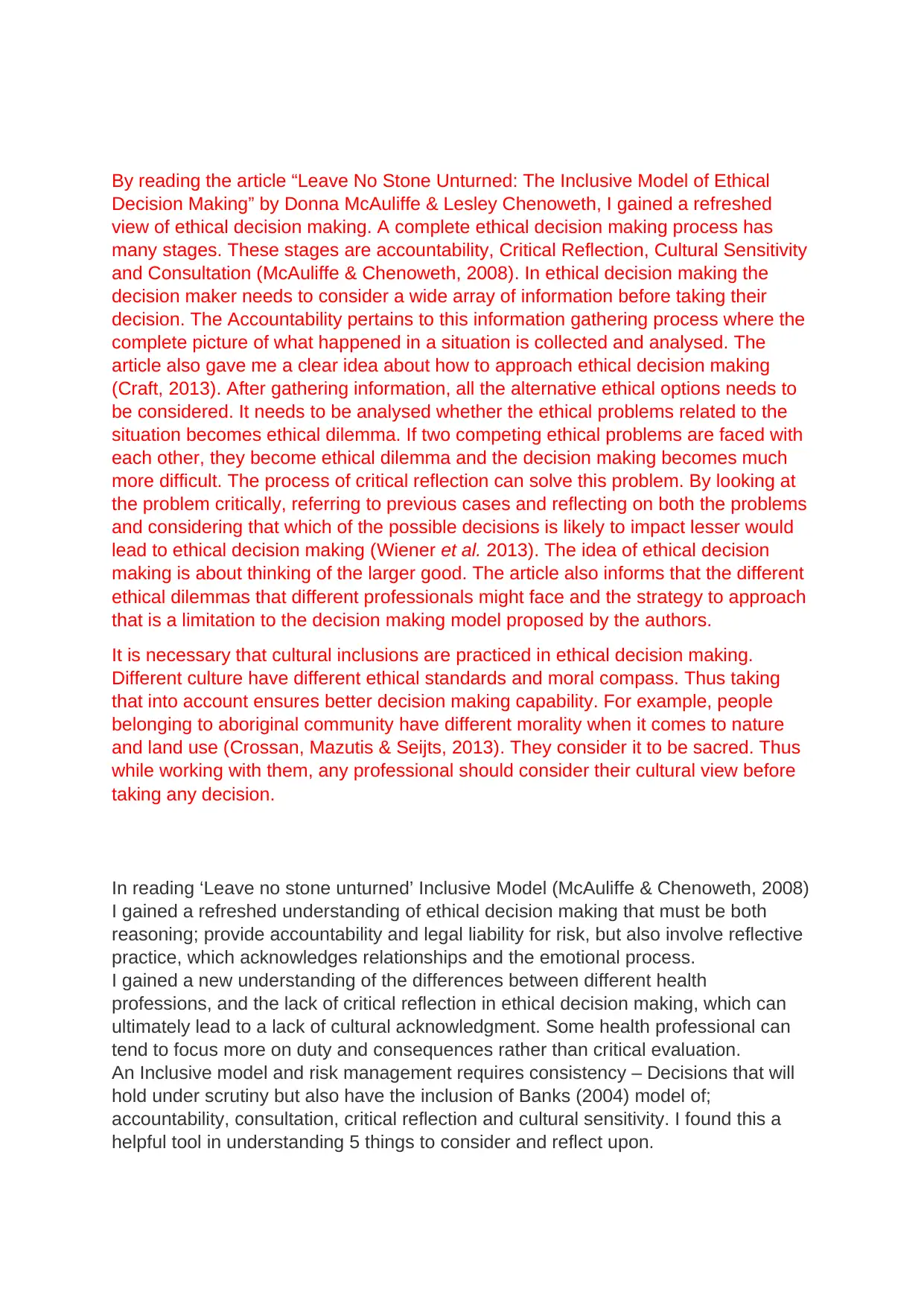Ethical Decision Making: 3-2-1 Reflection on Inclusive Model
VerifiedAdded on 2022/11/13
|3
|755
|6
Discussion Board Post
AI Summary
This discussion post is a reflection on ethical decision-making, structured using the 3-2-1 method, based on the article "Leave No Stone Unturned: The Inclusive Model of Ethical Decision Making" by Donna McAuliffe & Lesley Chenoweth. The student identifies three key learnings: the inclusive model's components (accountability, critical reflection, cultural sensitivity, and consultation), the importance of gathering information, and the varying ethical decision-making approaches across professions. Two significant issues for future practice are highlighted: the need for critical reflection and identifying key stakeholders. The post also includes one question for further exploration regarding ethical dilemmas and cultural considerations. The student emphasizes the importance of cultural sensitivity and critical reflection in ethical decision-making, aligning with the principles of the inclusive model. References to supporting literature are also included.
1 out of 3










![[object Object]](/_next/static/media/star-bottom.7253800d.svg)